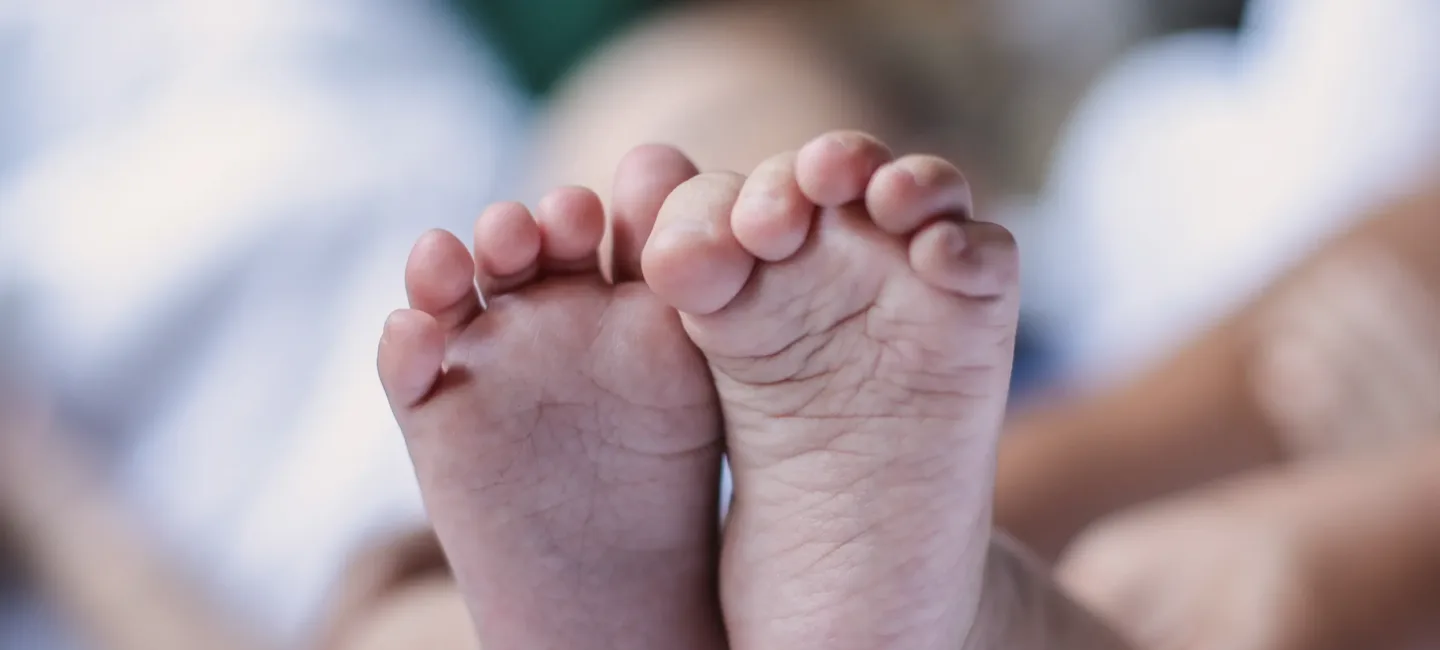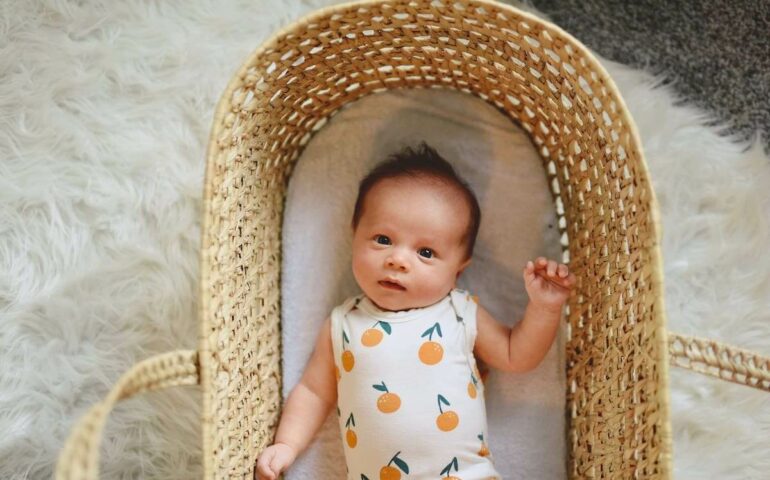
Just like adults, babies can get ingrown nails. This issue can sometimes lead to an infection if it isn’t addressed in time. How should you trim your baby’s nails to avoid this problem? Which tools are best suited?
Ingrown toenail in babies: all our tips.
Understanding ingrown toenails in babies
Often located on the toes, this occurs when the nail grows into the skin, causing irritation and sometimes infection. In infants, the signs to watch for may include:
- Redness around the nail,
- swelling,
- and a painful appearance to the touch.
In some cases, a small wound or paronychia (whitlow) may form, indicating a more serious infection. 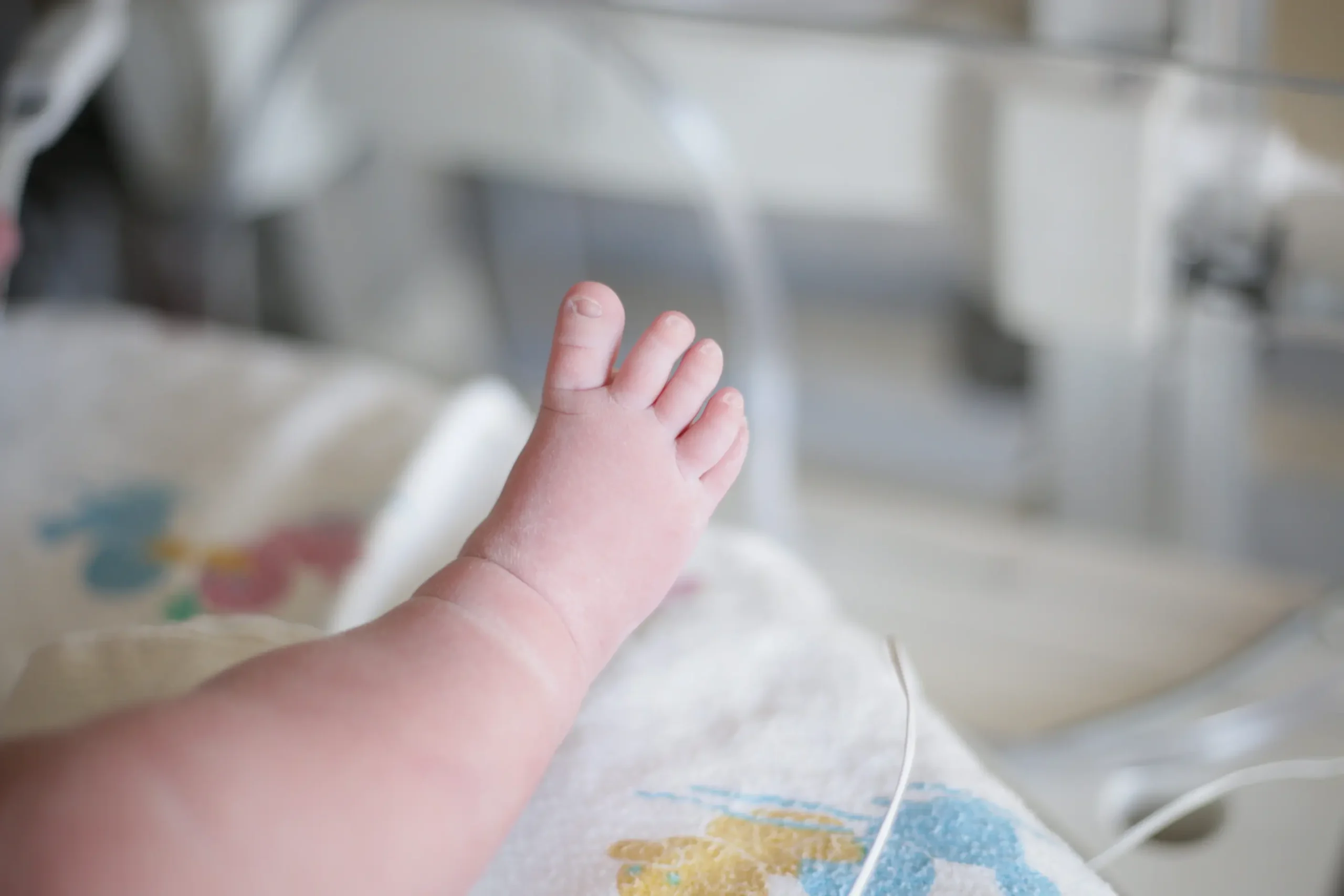
Ingrown toenails in babies: common causes
Ingrown nails in babies are most of the time harmless. Here are a few reasons why your infant might develop an ingrown nail.
Genetic factors
Some babies are born with natural predispositions that can promote the appearance of ingrown nails. Genetic factors play a role to consider in the shape and growth of the nails. For example, if one parent tends to have ingrown, curved, or thick nails, their baby may inherit this trait. In addition, nail shape can be influenced by the structure of the baby’s toes. Nails that are naturally more curved or that tend to grow inward are more likely to become ingrown.
In some cases, thickening of the nail due to fungal infections—although rare in infants—can also be a factor. If you notice a fungus or a change in the nail’s texture, you can consult a healthcare professional to prevent recurrence.
Nail care
One of the most common mistakes is cutting nails too short. This can encourage the nail to grow into the skin, causing an ingrown nail. It’s best to use rounded-tip scissors or a nail clipper specifically designed for babies to minimize risks.
Want to learn more? Feel free to download the May app, where you’ll find plenty of resources to support and guide you throughout your journey as a new parent.
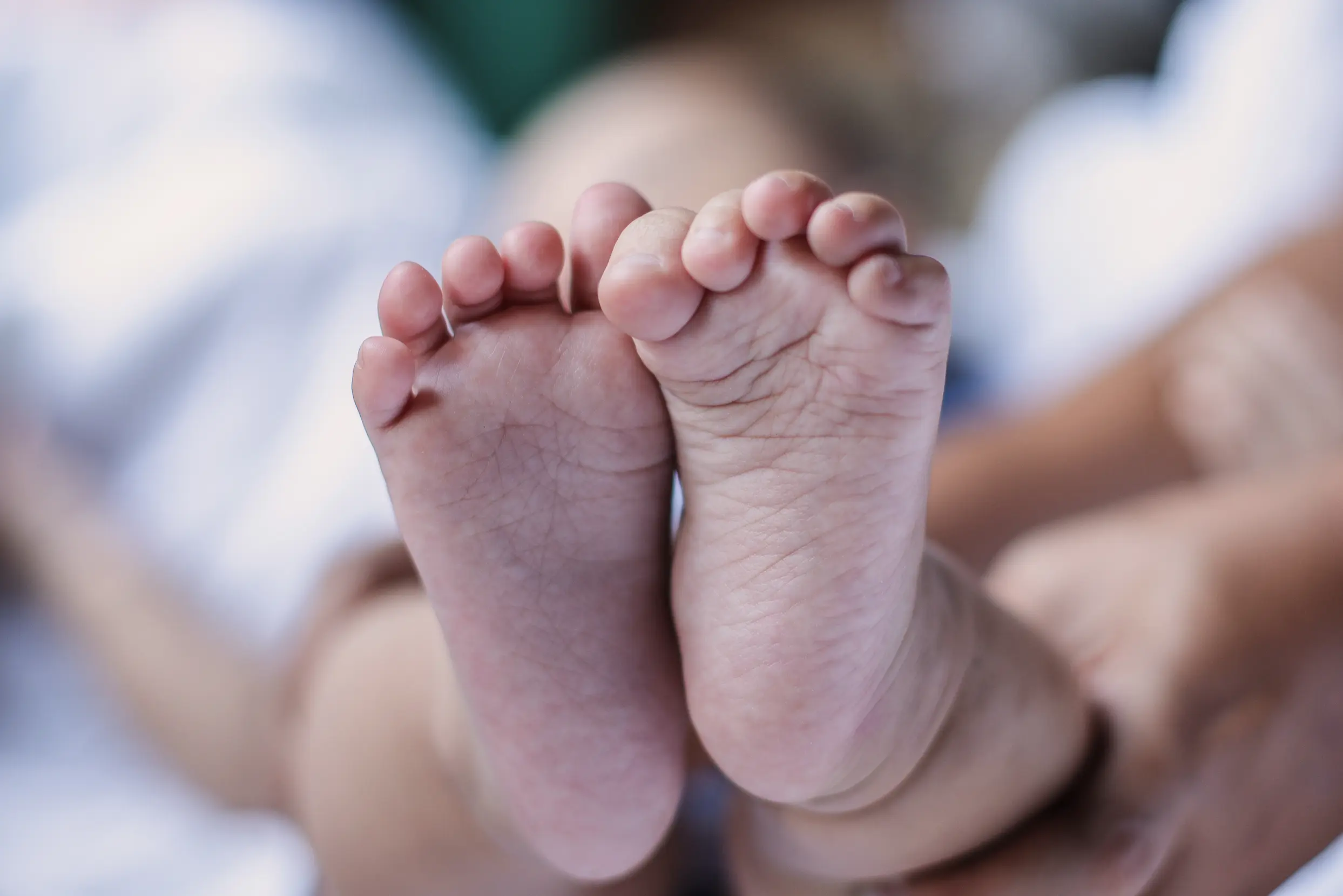
Ingrown toenail in babies: when and how to cut the nails?
You can start filing or cutting your baby’s nails from one month. Babies’ nails are delicate and require special care during grooming. To prevent ingrown nails, it’s advisable to cut the nails properly using rounded-tip scissors or a nail clipper specifically designed for babies. It’s recommended to cut the nails straight across (including the free edges) to prevent them from growing into the skin. Also be sure not to cut them too short, as this can promote the appearance of an ingrown nail. 
How to treat an ingrown nail in a baby
To treat an ingrown nail in a baby, here are some practical tips:
- You can soak your baby’s foot in warm water for 10 to 15 minutes to help reduce swelling and soften the skin around the nail.
- After the bath, you can also gently massage the affected area to try to free the nail from the surrounding skin without applying too much pressure.
- If you notice signs of infection, such as redness or warmth, you can give an antiseptic soak for the toe to help prevent a wound or paronychia.
- It’s advisable to use rounded-tip scissors or a baby nail clipper to cut nails straight across, avoiding cutting them too short to reduce the risk of the nail growing into the skin.
- If the nail is too short to cut, you can opt for a gentle file to smooth the tips and prevent them from catching on the skin.
When to consult a healthcare professional
Sometimes it may be necessary to consult a professional:
- if you observe an infection that does not improve after a few days of home care,
- if your baby seems to be experiencing significant pain,
- also, thickening or discoloration of the nail could indicate a fungal infection or another issue requiring professional attention,
- if your baby frequently has ingrown nails.
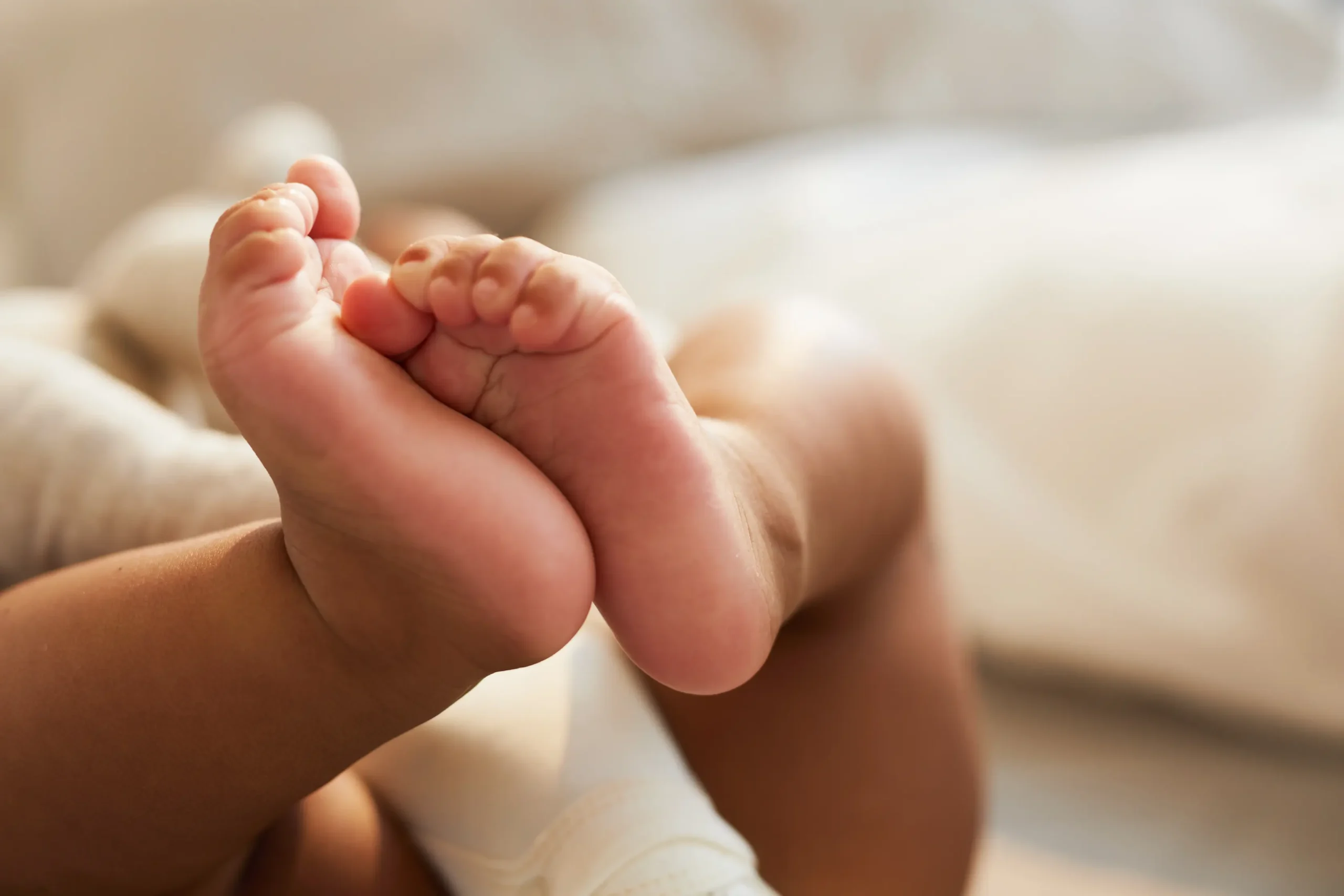
Preventing ingrown nails in babies
With a few precautions, you can reduce the risk of ingrown nails. In addition to the nail-trimming advice, you can:
- Disinfect tools before and after use to reduce the risk of infection.
- Use baby manicure kits, available in many stores, designed to be safe and suited to an infant’s finger size.
- Check for thickening of your baby’s nails to help prevent ingrown nails.
Finally, shoes play a role in preventing ingrown nails. It’s best to choose shoes that aren’t too tight and that provide enough room for the toes to move freely. This promotes good healing and reduces excessive pressure on the nails.
In conclusion, ingrown nails in babies can seem concerning, but with proper care and a few precautions, you can prevent recurrences and support good healing.
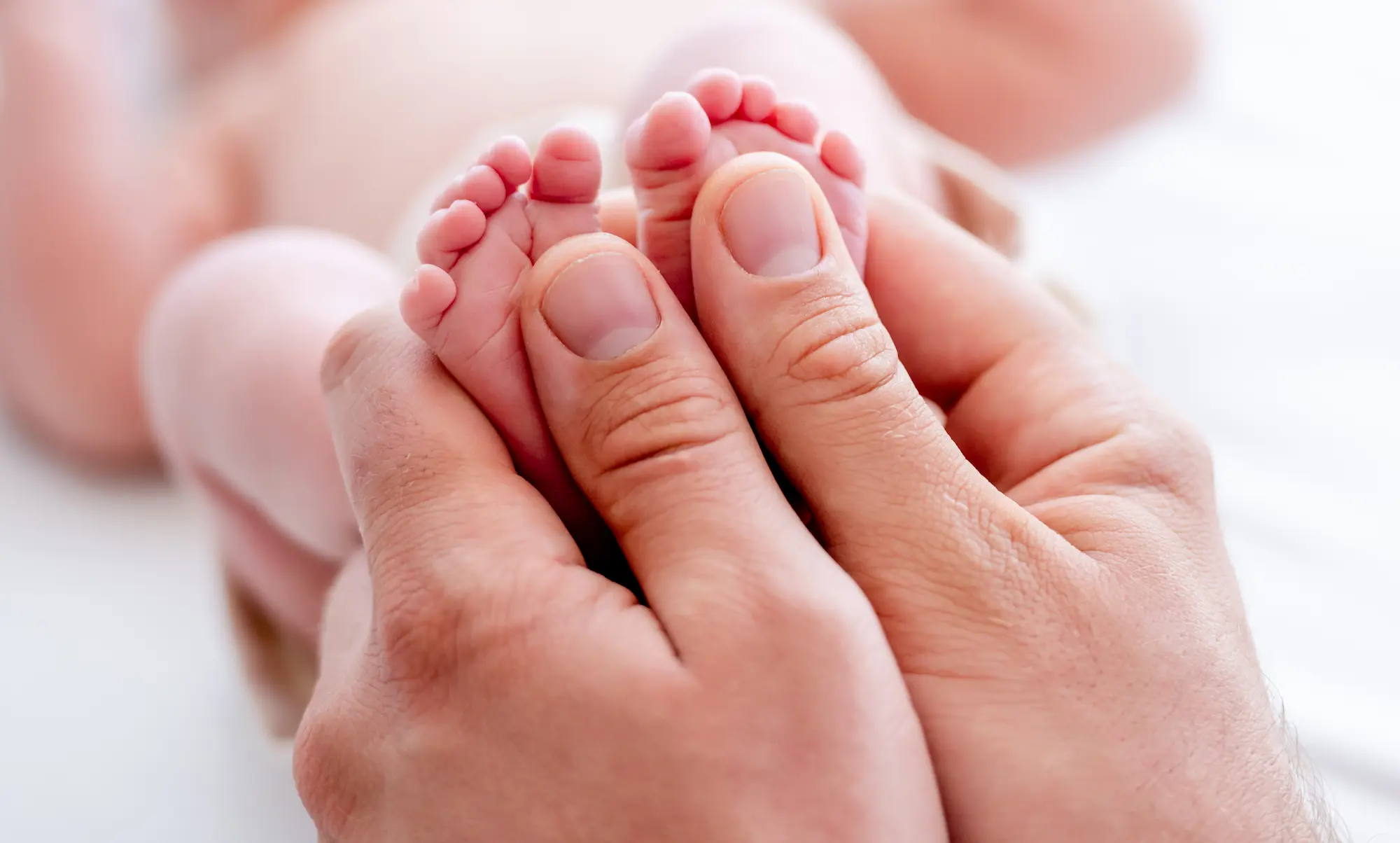
**
Photo credits: seventyfourimages | Lightitup_now | tan4ikk | titovailona | Queenmoonlite35 | chasingafterdear
This text was translated from French by an artificial intelligence. The information, advice, and sources it contains comply with French standards and may therefore not apply to your situation. Make sure to complement this reading by visiting the May US/UK app and consulting the healthcare professionals who are supporting you.
